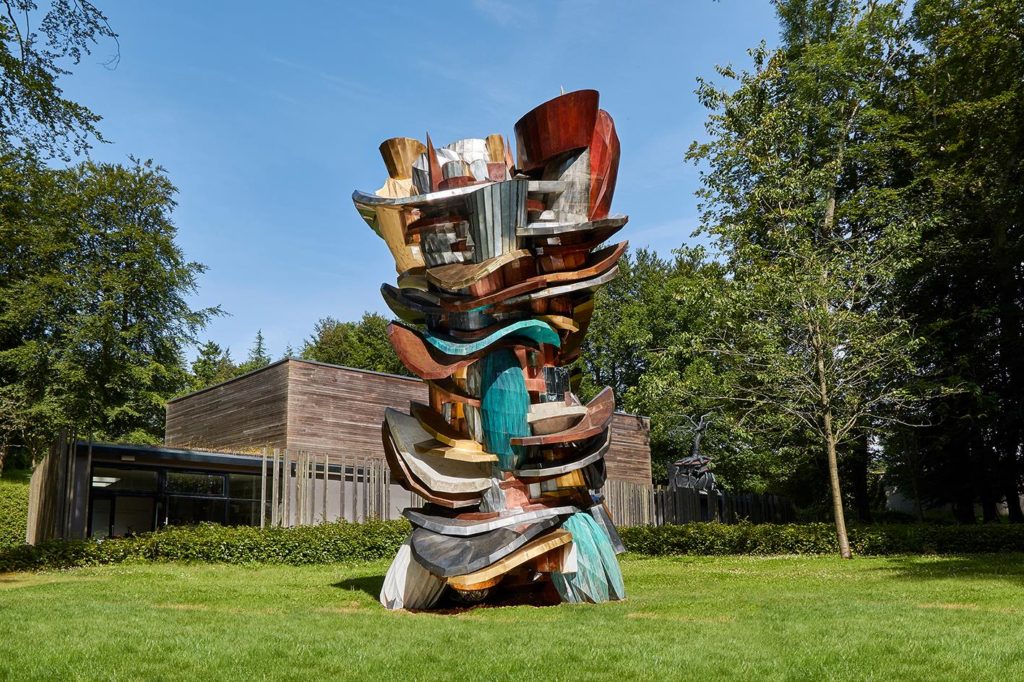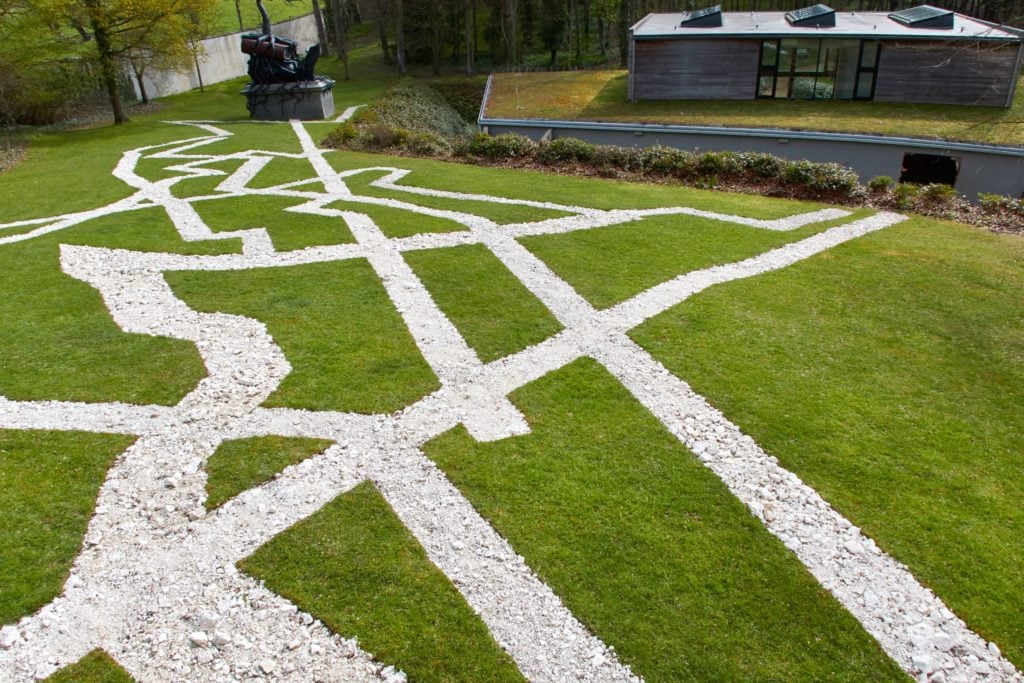Art World
One of the UK’s Leading Sculpture Parks Is Shutting Down Amid Financial Woes It Attributes to Brexit and Overspending
In a cautionary tale, Cass Sculpture closes, but its internationally important archive has been saved.

In a cautionary tale, Cass Sculpture closes, but its internationally important archive has been saved.

Javier Pes

One of the UK’s leading sculpture parks has abruptly closed. The non-profit Cass Sculpture, which was founded more than three decades ago, seemed like a model of financial sustainability. But an overly ambitious selling show of contemporary Chinese sculpture coupled with a downturn in the art market partly blamed on Brexit has contributed to it closing permanently at the end of October.
The sculpture park founded by Wilfred and Jeannette Cass has shown hundreds of large-scale works, many of which they commissioned. Works by leading British and international sculptors are displayed in an idyllic rural setting in West Sussex in the South of England.
A spokesman for the Cass Sculpture Foundation confirms that its trustees have decided to “wind down the charity over the next six to nine months.” He added: “Wilfred and Jeanette Cass are now aged 94 and 92, respectively. Furthermore, the lease of their grounds is due to expire in 2020.”
“It is very sad,” says Mark Cass, a trustee of his parent’s sculpture foundation, who is the founder and chief executive of the art supplier Cass Art. He says that works on loan will be returned, and others have found new homes. But its internationally important archive, which includes maquettes of works commissioned by the Casses from artists including Anthony Caro, Eva Rothschild, and Marc Quinn, has been saved. It is heading to the nearby Pallant House Gallery in Chichester. The art museum did not immediately respond to a request for comment about the acquisition.
The Cass sculpture park was financially sustainable, Mark Cass stresses, until the ill-fated Chinese art show in 2016. He says that his main focus is on running Cass Art rather than taking over the reigns of the sculpture park. The sale of the archive has meant the foundation has cleared its debts, he says.
Mark Cass says his parents’ innovative business model paved the way for the likes of Hauser and Wirth, referring to the gallery’s rural space rural in Somerset, in the West of England.

Xu Zhen (Produced by MadeIn Company) Movement Field (2016) at Cass Sculpture, courtesy of the artist and Cass Sculpture Foundation.
The story of Cass Sculpture is a cautionary tale for founders of other private museums. Wilfred and Jeannette Cass were in their 70s when they decided to help both established and emerging sculptors realize ambitious works by commissioning and displaying them on the grounds of their home. All went well as 16 works were commissioned for the group show “A Beautiful Disorder,” which was curated by Ella Liao, Wenny Teo, and Claire Shea, the former curatorial director of Cass Sculpture.
A critical success, it included video works by the artists Cao Fei and Cao Dan about their father, the socialist realist sculptor Cao Chong. But the high cost of fabricating big works in China and shipping them to Sussex left the foundation with a financial hangover. The exhibition went way over budget, and totaled nearly £1 million ($1.3 million). Meanwhile, sales of sculpture fell a third, from more than £800,000 in 2016 down to £270,000 in 2017, the foundation’s annual report shows. The trustees blamed “a downturn in the sculpture sale market due in part to Brexit.” Cost cutting, staff redundancies, and a three-figure loan from the Casses has kept the park going since then.
Cass Sculpture was partly based on the Yorkshire Sculpture Park in the North of England, Storm King in upstate New York, and the Louisiana Museum of Modern Art near Copenhagen, but with one big difference: Cass Sculpture was always a selling space. A percentage of the sales of the works went to the artist and the rest supported new works, as well as the operating costs of the sculpture park, and its educational programming. It was also kept constantly refreshed by the arrival of new works as pieces were sold.
The foundation’s website list 520 works of art by 290 artists. Currently on display are works by Olaf Breuning, Bernar Venet, the Chapman brothers, and Laura Ford, among others. The Casses were among the first to commission the designer Thomas Heatherwick, who made a pavilion in 1992. Wilfred Cass was also instrumental in the launch of London’s Fourth Plinth in the late 1990s.
While the Casses were latecomers to sculpture, the Cass family history is steeped in art. Wilfred Cass, who escaped from Nazi Germany as a child, is the grandson of the Berlin-based art dealer Paul Cassirer. He was instrumental in establishing the reputations of artists, including Vincent van Gogh and Paul Cézanne in Germany.
Today, Mark Cass is philosophical about the end of his parent’s dream. “My great-grandfather only sold Van Goghs for a decade,” he says. “The sculpture park was my parents’ passion for 25 years.”